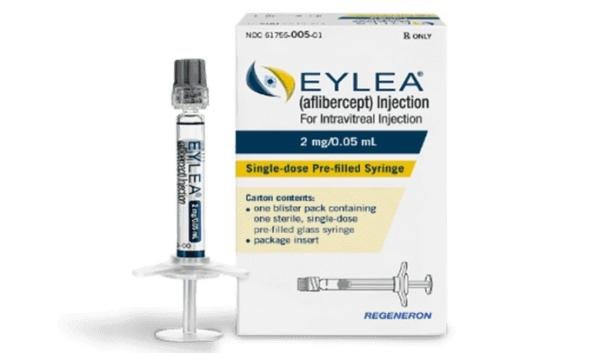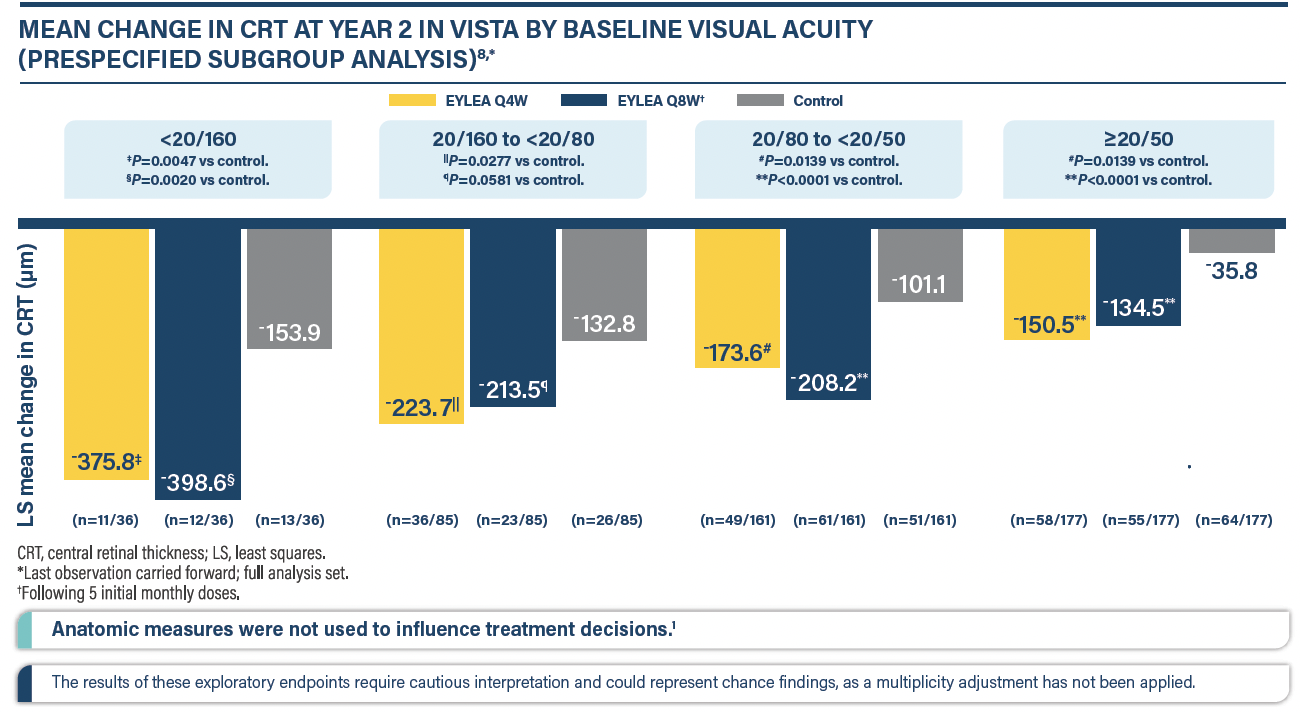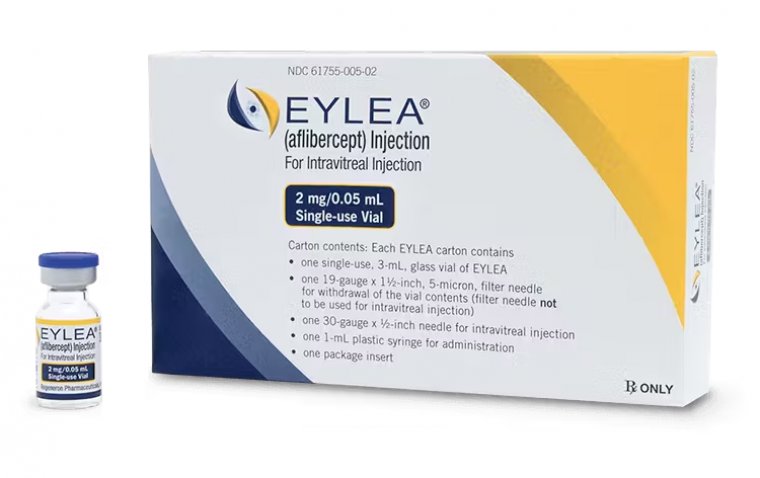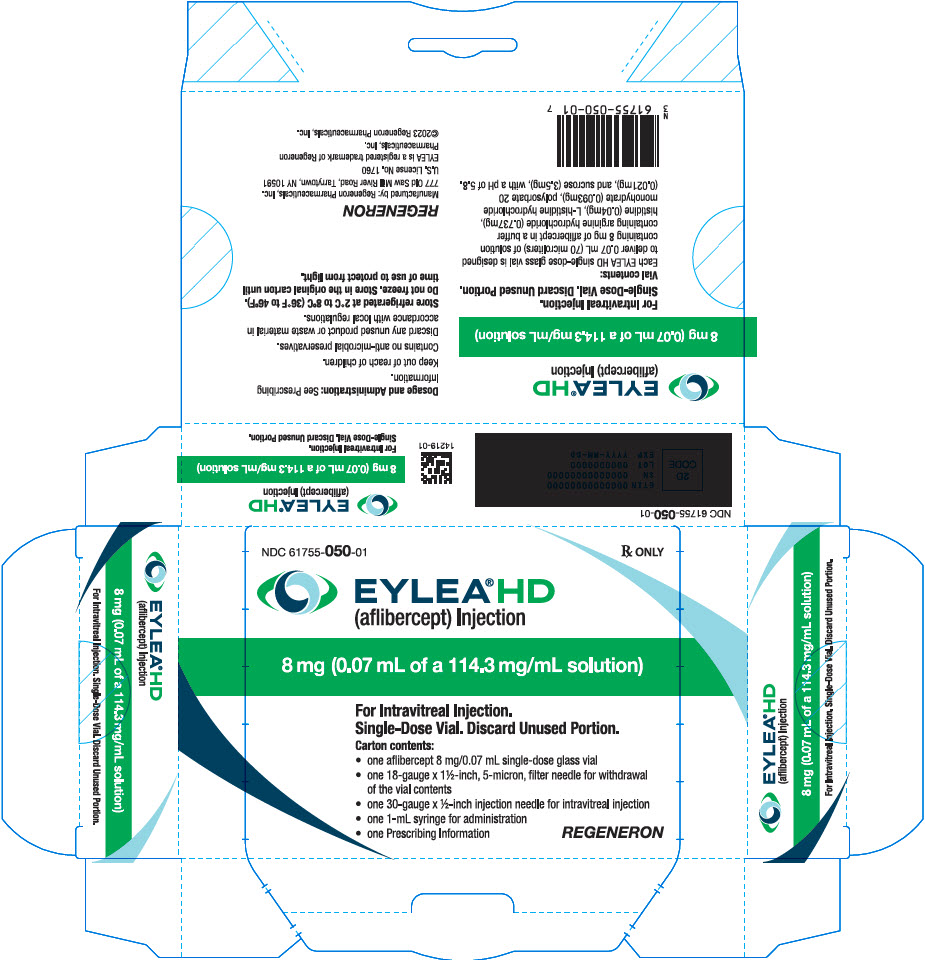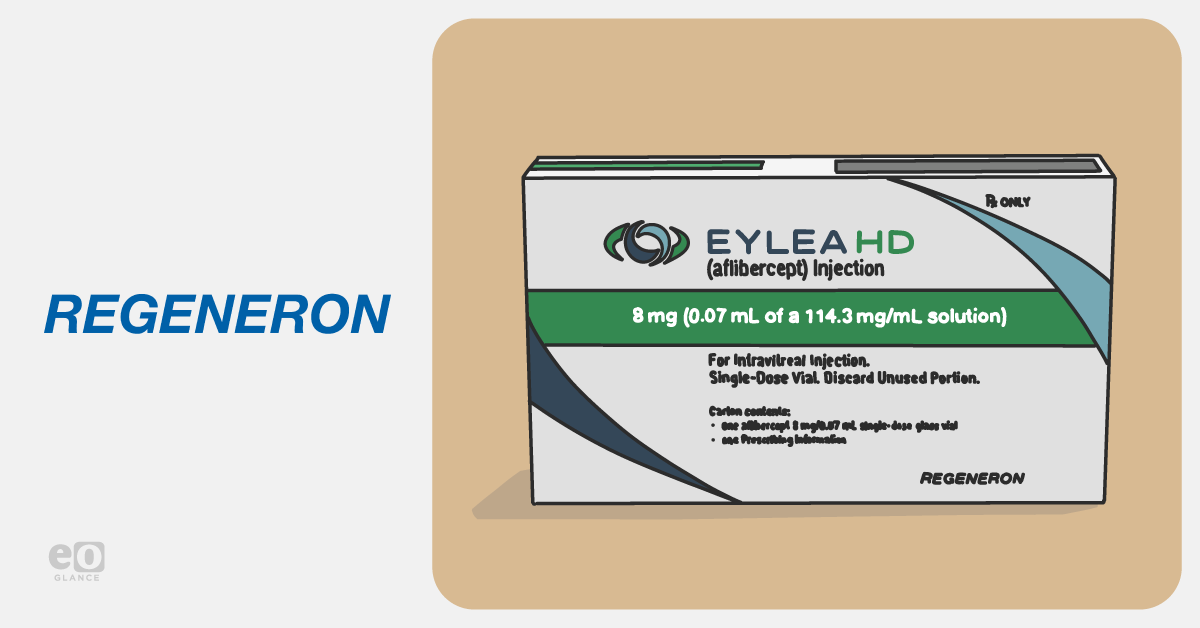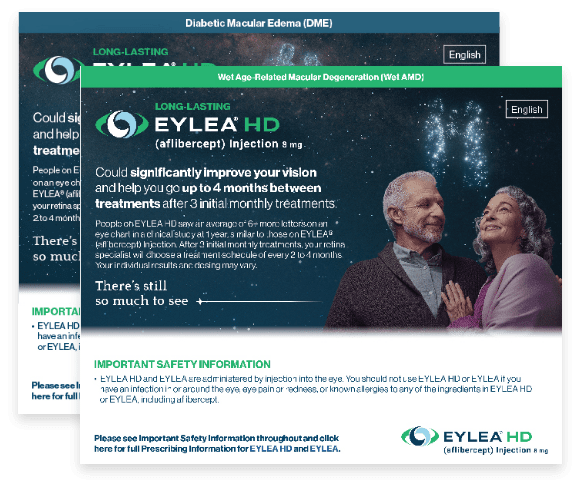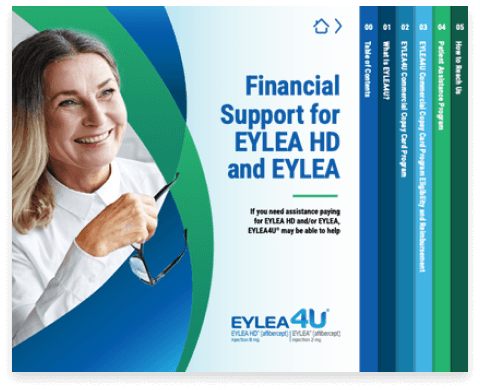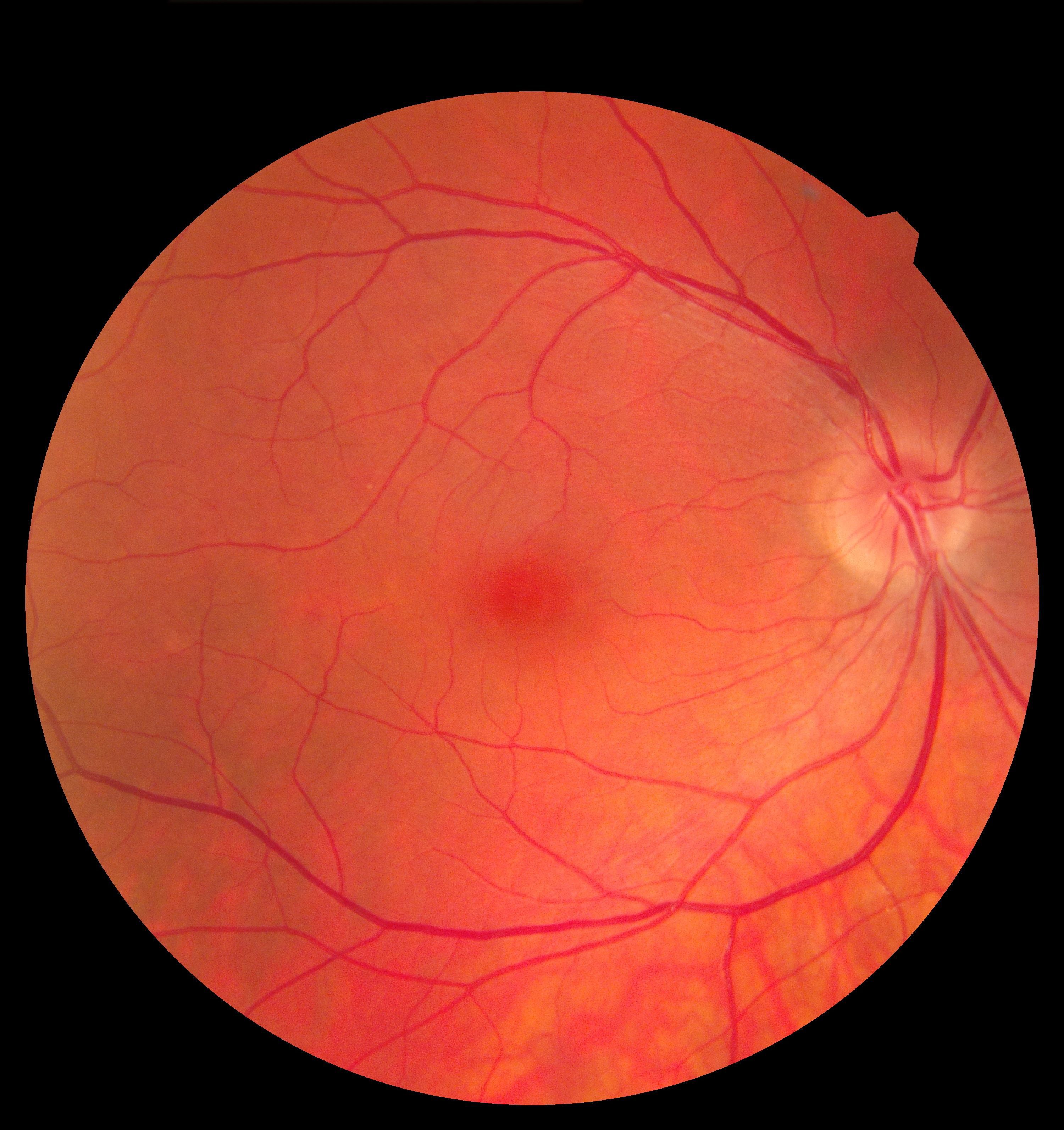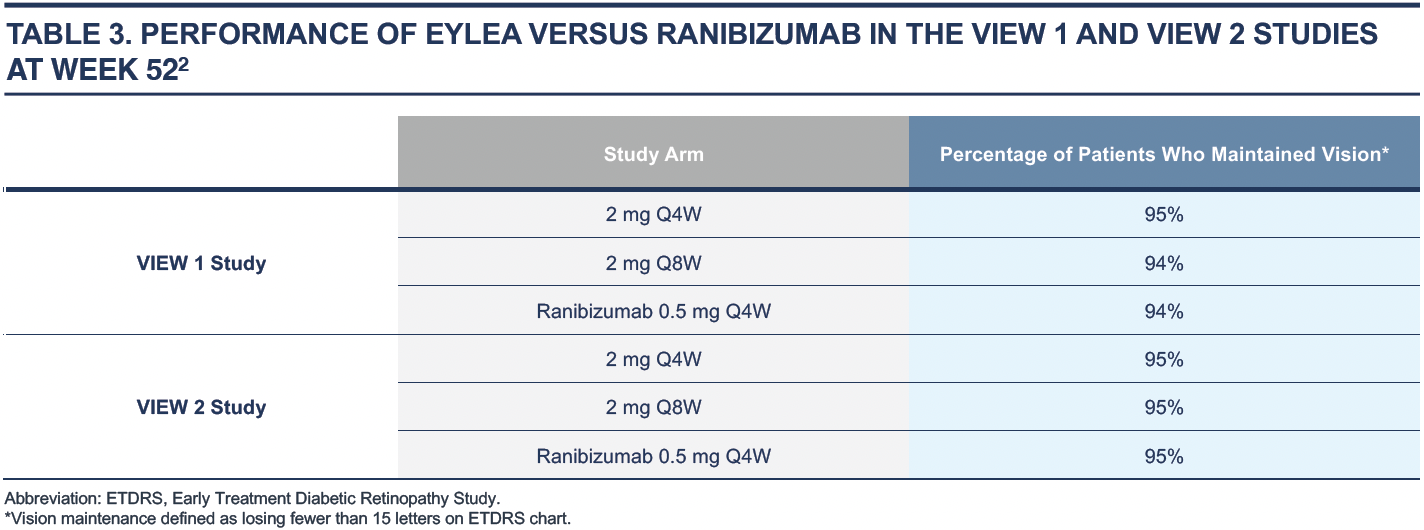What Is The Difference Between Eylea And Eylea Hd

Imagine peering through a window, the world outside softened, details blurred. Then, with a subtle adjustment, the image sharpens, colors become vibrant, and clarity returns. For individuals battling certain eye conditions, this experience mirrors the potential difference between two sight-saving medications: Eylea and Eylea HD.
Understanding the nuances between these treatments is crucial for patients and their doctors to make informed decisions, ensuring the best possible vision outcomes. This article will guide you through the key distinctions of Eylea and Eylea HD.
In essence, Eylea HD is a higher-dose formulation of the original Eylea medication. Both drugs target the same underlying cause of specific eye diseases, but Eylea HD offers the potential for extended treatment intervals between injections. This can lead to fewer clinic visits while maintaining similar or even improved visual results.
The Common Ground: Understanding Anti-VEGF Therapy
To appreciate the difference between Eylea and Eylea HD, it's important to grasp the science behind them. Both medications belong to a class of drugs called anti-VEGF agents.
VEGF stands for Vascular Endothelial Growth Factor. This protein stimulates the growth of new blood vessels.
While VEGF is essential for normal bodily functions, in certain eye diseases, it can become overactive. This leads to the formation of abnormal, leaky blood vessels in the retina, the light-sensitive tissue at the back of the eye.
These leaky vessels cause fluid and blood to accumulate, disrupting the retina's function and leading to vision loss. Conditions such as wet age-related macular degeneration (AMD), diabetic macular edema (DME), and retinal vein occlusion (RVO) are often driven by excessive VEGF activity.
Anti-VEGF drugs like Eylea and Eylea HD work by blocking the action of VEGF. By inhibiting VEGF, these medications help to reduce the growth of abnormal blood vessels and decrease leakage. This, in turn, can stabilize or improve vision.
Eylea: A Proven Track Record
Eylea (aflibercept) was first approved by the FDA in 2011 for the treatment of wet AMD. It quickly became a mainstay in the treatment of various retinal diseases, due to its proven efficacy and safety profile.
The standard Eylea treatment regimen typically involves injections every four weeks initially. After a series of loading doses, the injection interval may be extended to every eight weeks based on the patient's response.
Eylea's effectiveness has been demonstrated in numerous clinical trials. These trials have shown significant improvements in visual acuity and a reduction in the risk of vision loss for patients with wet AMD, DME, and RVO.
Eylea HD: A Higher Dose for Extended Durability
Eylea HD (high-dose aflibercept) is a more recent innovation. It was approved by the FDA in 2023 for the treatment of wet AMD, DME, and DR. It contains a higher concentration of the active ingredient, aflibercept, compared to the original Eylea.
Specifically, Eylea HD contains 8 mg of aflibercept per dose, whereas Eylea contains 2 mg. This higher dose allows for a longer duration of action, potentially reducing the frequency of injections needed to maintain vision.
Clinical trials have demonstrated that Eylea HD can be administered at intervals of up to every 12 or 16 weeks after the initial loading doses, while still achieving comparable or even superior visual outcomes compared to Eylea administered every eight weeks.
Key Differences Summarized
Dosage
Eylea: 2 mg per injection.
Eylea HD: 8 mg per injection.
Injection Frequency
Eylea: Typically every 4-8 weeks after initial loading doses.
Eylea HD: Typically every 12-16 weeks after initial loading doses.
Efficacy
Clinical trials suggest Eylea HD may offer comparable or even improved visual outcomes compared to Eylea in certain patients.
Safety
The safety profiles of Eylea and Eylea HD appear similar based on clinical trial data. The most common side effects are related to the injection procedure itself, such as eye pain, redness, or temporary blurred vision.
The Potential Benefits of Fewer Injections
The primary advantage of Eylea HD is the potential for less frequent injections. This can significantly reduce the burden on patients, who often require long-term treatment for chronic eye conditions.
Fewer injections translate to fewer trips to the doctor's office, less time off work, and reduced costs associated with transportation and co-pays. This can improve patient compliance and overall quality of life.
Moreover, reducing the number of injections may also lower the risk of injection-related complications, although these are generally rare.
Factors to Consider When Choosing a Treatment
The decision between Eylea and Eylea HD should be made in consultation with a qualified ophthalmologist. Several factors need to be considered, including the specific eye condition, disease severity, individual patient needs, and potential risks and benefits.
Your doctor will conduct a thorough eye examination and review your medical history to determine the most appropriate treatment plan. They will also discuss the potential advantages and disadvantages of each medication and answer any questions you may have.
Cost and insurance coverage may also play a role in the decision-making process. Eylea HD is a newer medication and may have different coverage policies compared to Eylea.
Looking Ahead: The Future of Anti-VEGF Therapy
The development of Eylea HD represents a significant advancement in anti-VEGF therapy. It underscores the ongoing efforts to improve treatment options and reduce the burden on patients with retinal diseases.
Research continues to explore even longer-acting anti-VEGF agents and alternative delivery methods. These include sustained-release implants and gene therapies. The ultimate goal is to provide effective and convenient treatments that can preserve vision for as long as possible.
As new treatments emerge, it's crucial for patients to stay informed and work closely with their eye care professionals. This way, they can ensure they are receiving the best possible care and maximizing their chances of maintaining healthy vision.
The evolution from Eylea to Eylea HD shows the commitment of the medical community to improving patient outcomes. By understanding the distinctions between these medications and engaging in open communication with their doctors, patients can confidently navigate their treatment journey and strive for a brighter, clearer future.
